![]()
|
Click on the graphics for larger version (this is a picture intensive page - please be patient loading.) For a printer friendly version, click here. |
|
A) Observing the Solar System 1) The Sun’s Family (a) Geo-centric Model (1) Early astronomy – early model (2) Earth-centered (b) Helio-centric Model (1) Sun-centered (i) Inertia 1. Tendency to move in straight line 2. Gravity between Sun and object steers the path into an elliptical orbit (c) Eight planets & moons (d) Other bodies (1) Comets (2) Asteroid Belt (3) Plutonians |
Geo-centric Model Helio-centric Model |
|
|
|
||
|
2) Tools for observing the Solar System (a) Pre-Galileo (1) Naked eye (b) Telescopes (1) Refracting (i) Focuses light through a lens (2) Reflecting (i) Uses curved mirrors to focus light (3) Radio (i) Useful 24/7 (ii) Collect radio waves (4) Space-based (i) Hubble (c) Satellites (1) Object that revolves around another body (i) Natural (ii) Man-made (2) October 4, 1957 (i) Former Soviet Union launches Sputnik (3) January 29, 1958 (i) USA launches Explorer I (d) Probes & Rockets (1) Spacecraft that travel into space (i) Viking I (ii) Voyager |
Refracting Telescope Reflecting Telescope Cassegrain Telescope Schmidt-Cassegrain Telescope Very Large Array Radio Telescopes Hubble Telescope |
|
|
Sputnik |
Voyager |
|
|
B) Touring the Solar System 1) Inner Planets (Terrestrial) (a) Mercury (b) Venus (c) Earth (d) Mars 2) Asteroid Belt 3) Outer Planets (Jovian) (a) Jupiter (b) Saturn (c) Uranus (d) Neptune (e) Pluto - presently known as a "plutonian" or "dwarf planet" C) Other members of the Sun’s family 1) Comets (a) Mass of rock and frozen fluid (b) In orbit around the sun (1) Halley’s Comet (i) About 76 years 2) Meteors – “Shooting Stars” (a) Meteoroid (1) Chunk of matter flying through space (b) Meteor (1) Meteoroid that falls through the atmosphere (c) Meteorite (1) Meteor that strikes a planets surface |
Click here for Terrestrial planets Click here for Jovian Planets Asteroid Belt Ida (foreground) and Dactyl Comet Hyakutake Halley's Comet |
|
|
Meteorite Types |
||
| Iron | primarily iron and nickel; similar to type M asteroids | 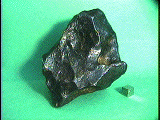 |
|---|---|---|
| Stony Iron | mixtures of iron and stony material like type S asteroids | 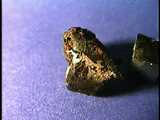 |
| Chondrite | largest number of meteorites fall into this class; similar in composition to the mantles and crusts of the terrestrial planets | 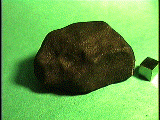 |
| Carbonaceous Chondrite | very similar in composition to the Sun less volatiles; similar to type C asteroids | 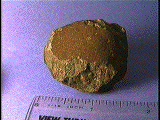 |
| Achondrite | similar to terrestrial basalts; the meteorites believed to have originated on the Moon and Mars are achondrites | 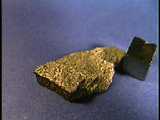 |
![]()
< Astronomy > < Website Directory >